Aktualizacja: 31 lipca 2020
 Inhibition of experimental oral carcinogenesis by topical beta carotene
Inhibition of experimental oral carcinogenesis by topical beta carotene
by Schwartz, et al. 1986. Harvard School of Dental Medicine. Pub. in Carcinogenesis, May 1986 7(5) 711-715. USA.
Beta carotene was found to significantly inhibit the formation of squamous cell carcinoma of hamster buccal pouch when a solution was applied topically three times weekly for 22 weeks in an experiment with 40 hamsters. In a second experiment with 80 hamsters, beta carotene was found to inhibit oral carcinogenesis in an initiation-promotion hamster buccal pouch system. Beta carotene inhibited both initation and promotion.
Prevention of experimental oral cancer by extracts of spirulina– dunaliella algae
by J. Schwartz, G. Shklar, et al. 1988. Harvard School of Dental Medicine. Pub. in Nutrition and Cancer 11, 127-134. 1988. USA.
Abstract: An extract of Spirulina-Dunaliella algae was shown to prevent tumor development in hamster buccal pouch when a solution was applied topically three times weekly for 28 weeks. Untreated control animals all presented gross tumours of the right buccal pouch. Animals fed canthaxanthin presented a notably and statistically significant reduction in tumour number and size compared with controls. Animals fed beta carotene demonstrated a smaller but statistically significant reduction in tumor number and size. The algae animals presented a complete absence of gross tumors. However, microscopic sections of the buccal pouch in the algae group showed localized areas of dysplasia and early carcinoma-in-situ undergoing destruction.
Evaluation of chemoprevention of oral cancer with spirulina
by Babu, M. et al. 1995. Pub. in Nutrition and Cancer, Vol. 24, No. 2, 197-202. India.
Abstract: The blue-green microalgae spirulina, used in daily diets of natives in Africa and America, has been found to be a rich natural source of proteins, carotenoids and other micronutrients. Experimental studies in animal models have demonstrated an inhibitory effect of spirulina algae on oral carcinogenesis. Studies among preschool children in India have demonstrated spirulina fusiformis to be a effective source of dietary vitamin A. We evaluated the chemoproventative activity of spirulina (1 g/day for 12 months) in reversing oral leukoplakia in pan tobacco chewers in Kerala, India. Complete regression of lesions was observed in 20 of 44 (45%) evaluable subjects supplemented with spirulina, as opposed to 3 of 43 (7%) in the placebo arm. When stratified by type of leukoplakia, the response was more pronounced in homogeneous lesions: complete regression was seen in 16 of 28 (57%) subjects with homogeneous leukoplakia, 2 of 8 with erythroplakia, 2 of 4 with verrucous leukoplakia, and 0 of 4 with ulcerated and nodular lesions. Within one year of discontinuing supplements, 9 of 20 (45%) complete responders with spirulina developed recurrent lesions. Supplementation with spirulina did not increase serum concentrations of retinal or beta carotene, nor was it associated with toxicity. This is the first human study evaluating the chemopreventive potential of spirulina. More studies in different settings and different populations are needed for further evaluations.
Inhibitive effect and mechanism of polysaccharide of spirulina on transplanted tumor cells in mice
by Lisheng, et al. 1991. Pub. in Marine Sciences, Qingdao, N.5. pp 33-38. China.
Abstract: Polysaccharide of spirulina can inhibit the proliferation of ascitic heptoma cells ofmice in the concentration of 200 mg/kg. It can inhibit the incorporation of Hthymidine, H-uridine and H-leucine into DNA, RNA and protein synthesis of sarcoma 180 and ascitic heptoma cells during the period of 24 hours after exposure in vitro. The degree of inhibition increases with the extending of incubation time. Polysaccharide of spirulina can inhibit DNA synthesis of sarcoma 180 and ascitic heptoma cells. The mechanism of inhibition belongs to DNA metabolism disturbance.
Enhancement of endonuclease activity and repair DNA synthesis by polysaccharide of spirulina
by Qishen, P. et al. 1988. Pub. in Chinese Genetics Journal 15 (5) 374-381. China.
Abstract: The influence of water soluble polysaccharide from spirulina platensis on excision repair of DNA was investigated by means of endonuclease assay and radioautography. The results showed that the presence of the polysaccharide enhanced significantly both the repair activity of radiation damaged DNA excision and the unscheduled DNA synthesis (UDS). During the examination of the time course of the excision process, it was found that the presence of polysaccharide of spirulina not only increased the initial rates of the damaged DNA excision and the UDS, but also postponed the saturations of both important reactions of excision and repair DNA synthesis.
Inhibition of experimental oral carcinogenesis by topical beta carotene
by Schwartz, et al. 1986. Harvard School of Dental Medicine. Pub. in Carcinogenesis, May 1986 7(5) 711-715. USA.
Beta carotene was found to significantly inhibit the formation of squamous cell carcinoma of hamster buccal pouch when a solution was applied topically three times weekly for 22 weeks in an experiment with 40 hamsters. In a second experiment with 80 hamsters, beta carotene was found to inhibit oral carcinogenesis in an initiation-promotion hamster buccal pouch system. Beta carotene in hibited both initation and promotion.
Prevention of experimental oral cancer by extracts of spirulina-dunaliella algae
by J. Schwartz, G. Shklar, et al. 1988. Harvard School of Dental Medicine. Pub. in Nutrition and Cancer 11, 127-134. 1988. USA.
Abstract: An extract of Spirulina-Dunaliella algae was shown to prevent tumor development in hamster buccal pouch when a solution was applied topically three times weekly for 28 weeks. Untreated control animals all presented gross tumours of the right buccal pouch. Animals fed canthaxanthin presented a notably and statistically significant reduction in tumour number and size compared with controls. Animals fed beta carotene demonstrated a smaller but statistically significant reduction in tumor number and size. The algae animals presented a complete absence of gross tumors. However, microscopic sections of the buccal pouch in the algae group showed localized areas of dysplasia and early carcinoma-in-situ undergoing destruction.
Spis treści
Chemo/Radio-therapy References
Effect of polysaccharide from Spirulina platensis on hematopoietic cells proliferation, apoptosis and Bcl-2 expression in mice bearing tumor treated with chemotherapy
Yao Xue Xue Bao. 2002 Aug;37(8):616-20. PMID: 12567775, pdf: Liu X 2002.pdf PAS
AIM: To evaluate the effect of polysaccharide from Spirulina platensis (PSP) on hematopoietic cell proliferation, apoptosis and Bcl-2 expression in mice bearing tumor treated with chemotherapy.METHODS: The model of chemotherapy for transplant solid tumor in mice was established. The hematopoietic cell proliferation, apoptosis, Bcl2 expression and related cytokines were assayed by the technique of culture of hematopoietic progenitor cell, fluoromicroscope and light microscope, immunohistochemical method, and double antibody sandwich ELISA. RESULTS: PSP significantly ameliorated CFU-GM proliferation inhibition and hematopietic cells apoptosis induced by CTX. Moreover, PSP evidently increased the content of IL-1, IL-3, GM-CSF and TNF-alpha in serum and Bcl-2 expression of hematopoietic cells. CONCLUSION: PSP indirectly upregulated Bcl-2 expression of hematopoietic cells by promoting endogenous cytokines secretion which may be one of the mechanisms, by which PSP enhanced hematopoietic cell proliferation and inhibited its apoptosis in mice bearing tumor treated with chemotherapy.
Another mouse study showed that Spirulina reduced both skin and stomach tumors significantly. Spirulina was shown to reduce both the size of the tumors and to reduce the incidence of tumors (Dasgupta et al, 2001).
Chemomodulation of carcinogen metabolizing enzymes, antioxidant profiles and skin and forestomach papillomagenesis by Spirulina platensis
Dasgupta, T., Banejee, S., Yadav, P.K., and Rao, A.R. (Oct. 2001). Mol Cell Biochem., 226(1-2):27-38.
Beta-Carotene
Some astonishing work with carotenoids is showing that they may be much more than free radical absorbers. Leading edge researchers have discovered that some carotenoids actually affect the way our cells communicate. For example, cancerous cell lines are typically unable to receive growthcontrolling chemical signals from other cells. Beta-carotene opens the membrane communication channels of cancerous and pre-cancerous cells, allowing the body to signal the cancerous line to stop dividing. Thus, foods rich in carotenoids, in this case beta-carotene, may not only be able to prevent but also reverse cancers (Wolf 1992).
Retinoids and carotenoids as inhibitors of carcinogenesis and inducers of cell-cell communication
Wolf, George (1992). „Nutrition Reviews, Vol. 50, No.9.
Another study showed that beta-carotene reduces the size of tumors that were already present in hamsters and slowed new tumor growth, extending the hamsters’ survival time (Schwartz et al 1988).
Prevention of Experimental Oral Cancer by Extracts of Spirulina-Dunaliella Algae
Schwartz, Joel, Gerald Shklar, Susan Reid, and Diane Trickier (1988), Nutrition and Cancer, Vol. II, No.2
Numerous studies have shown that people whose diets are high in betacarotene have a lower incidence of various cancers (Ziegler 1989). Smokers, who are especially vulnerable, should maintain their beta-carotene levels. Low betacarotene levels in the blood of smokers have been connected with the later appearance of lung cancer (Stahelin et al 1991). Researchers at Albert Einstein College of Medicine have shown that beta-carotene exerts a protective effect against the development and progression of cervical cancer (Palan et al 1992). Beta-carotene may also help to protect the skin against the damaging effects of sunlight and help to prevent skin cancers (Kornhauser et al 1986). In the early 1980’s a landmark study by the US National Science Foundation entitled Diet, Nutrition and Cancer, concluded on the basis of epidemiological evidence that diets rich in beta carotene were correlated with a reduction in the incidence of cancer. In fact, over 200 studies of dietary consumption of beta-carotene indicated a reduction of a range of cancers.
A review of epidemiologic evidence that carotenoids reduce the risk of cancer
Ziegler, R.G. (1989). „Journal of Nutrition”, 119:116-122.
B-Carotene and cancer prevention: the Basel Study
Stahelin, H. B., K. F. Gey, M. Eicholzer, and E. Ludin (1991), American Journal of Clinical Nutrition, 53: 265S-9S.
B-Carotene levels in exfoliated cervicovaginal epithelial cells in cervical intraepithelial neoplasia and cervical cancer
Palan, Prabhudas R., Magdy S. Mikhail, Jayasri Basu, and Seymour L. Romney (1992), American Journal of Obstetrics and Gynecology, 167:1899-1903.
Protective effects of beta-carotene against psoralen phototoxicity: relevance to protection against carcinogenesis
Kornhauser, A., W. Wamer, and A. Giles, Jr. (1986), Antimutagenesis and
Anticarcinogenesis Mechanisms, edited by D. M. Shankel, P.E. Hartman, T. Kado Plenum Press. In a smaller study involving people who chew tobacco, results have shown that taking beta-carotene supplements reduces oral precancerous lesions (Stich et al 1991).
Remission of oral precancerous lesions of tobacco/areca nut chewers following administration of beta carotene or vitamin A, and maintenance of the protective effect
Stich, H., B. Mathew, R. Sankaranarayanan, et al (1991). „.” Cancer Detection, 15:93-98.
Phycocyanin has also shown promise in treating cancer in animals and stimulating the immune system (Iijima et al 1982).
Anti-tumor agent and method of treatment therewith
Iijima, N., I. Fugii, H. Shimamatsu, and S. Katoh. U.S. Patent Pending, Ref. No. P1150-726-A82679.
Researchers in both Japan and China have examined the potential of Spirulina’s polysaccharides in cancer therapy. In a study titled “Inhibition of tumor invasion and metastasis by Calcium Spirulan,” scientists at Japan’s Toyama Medical and Pharmaceutical University found that lung metastasis was significantly reduced by Calcium Spirulina by inhibiting tumor invasion of the cell membranes. A “marked decrease of lung tumor colonization” resulted (Mishima et al, 1998). The Chinese study was done on mice and dogs at the Medical and Pharmaceutical Academe of Yangzhou University. They found that the polysaccharides from Spirulina increased the level of red blood cells, white blood cells, and hemoglobin in the blood, and also increased nucleated cells in bone marrow of dogs. Their conclusion: “Polysaccharide extract of Spirulina Platensis has chemo-protective and radioprotective capability, and may be a potential adjunct to cancer therapy.” (Zhang et al, 2001)
Chemo- and radio-protective effects of polysaccharide of Spirulina platensis on hemopoietic system of mice and dogs
Zhang, H.Q., Lin, A.P., Sun, Y., and Deng, Y.M. (Dec. 2001). “.” Acta Pharmacol. Sin., 22(12):1121-4.
Inhibition of tumor invasion and metastasis by calcium spirulan (Ca-SP), a novel sulfated polysaccharide derived from blue-green alga, Spirulina patensis
Mishima, T., Murata, J., Toyoshima, M., Fujii, H., Nakajima, M., Hayashi, T., Kato, T., and Saiki, I., (Aug. 1998), Clin. Exp. Metastasis,
Animal research
Spirulina helps prevent heart damage caused by chemotherapy using Doxorubicin, without interfering with its anti-tumor activity.[13]
Protective effect of Spirulina against doxorubicin-induced cardiotoxicity Khan, M., et al. Phytotherapy Research. 2005 Dec;19(12):1030-7.
Spirulina and its use by humans
Clinical trials have shown that spirulina can serve as a supplementary cure for many diseases. Spirulina capsules have proved effective in lowering blood lipid level, and in decreasing white blood corpuscles after radiotherapy and chemotherapy (Ruan, Long and Guo, 1988; Ruan, Guo and Shu, 1990), as well as improving immunological function. Spirulina also is used for health food, feed and for the biochemical products since 1980s (Becker, 1988; Borowitzka, 1988; Richmond, 1988).
Effect of Spirulina polysaccharides on changes in white blood corpuscles induced by radiation in mice
Ruan, J.S., Guo, B.J. & Shu, L.H. 1990. . J. Radiation Res. & Technol. 8: 210–213. (In Chinese).
Spirulina prevented damage induced by radiation
Ruan, J.S., Long, C.S. & Guo, B.J. 1988. J. Genetics, 10: 27–30. (In Chinese).
Chemopreventative
Inhibition of tumor invasion and metastasis by calcium spirulan (Ca-SP), a novel sulfated polysaccharide derived from a blue-green alga, Spirulina platensis
Mishima T, Murata J, Toyoshima M, Fujii H, Nakajima M, Hayashi T, Kato T, Saiki I., Research Institute for Wakan-Yaku, Toyama Medical and Pharmaceutical University, Japan.Clin Exp Metastasis. 1998 Aug;16(6):541-50
Abstract: We have investigated the effect of calcium spirulan (Ca-SP) isolated from a blue-green alga, Spirulina platensis, which is a sulfated polysaccharide chelating calcium and mainly composed of rhamnose, on invasion of B16-BL6 melanoma, Colon 26 M3.1 carcinoma and HT-1080 fibrosarcoma cells through reconstituted basement membrane (Matrigel). Ca-SP significantly inhibited the invasion of these tumor cells through Matrigel/fibronectin-coated filters. Ca-SP also inhibited the haptotactic migration of tumor cells to laminin, but it had no effect on that to fibronectin. Ca-SP prevented the adhesion of B16-BL6 cells to Matrigel and laminin substrates but did not affect the adhesion to fibronectin. The pretreatment of tumor cells with Ca-SP inhibited the adhesion to laminin, while the pretreatment of laminin substrates did not. Ca-SP had no effect on the production and activation of type IV collagenase in gelatin zymography. In contrast, Ca-SP significantly inhibited degradation of heparan sulfate by purified heparanase. The experimental lung metastasis was significantly reduced by co-injection of B16-BL6 cells with Ca-SP. Seven intermittent i.v. injections of 100 microg of Ca-SP caused a marked decrease of lung tumor colonization of B16-BL6 cells in a spontaneous lung metastasis model. These results suggest that Ca-SP, a novel sulfated polysaccharide, could reduce the lung metastasis of B16-BL6 melanoma cells, by inhibiting the tumor invasion of basement membrane probably through the prevention of the adhesion and migration of tumor cells to laminin substrate and of the heparanase activity. Publication Types: Research Support, Non-U.S. Gov’t PMID: 9872601 [PubMed – indexed for MEDLINE]
Evaluation of chemoprevention of oral cancer with Spirulina fusiformis
Mathew B, Sankaranarayanan R, Nair PP, Varghese C, Somanathan T, Amma BP, Amma NS, Nair MK. Regional Cancer Centre, Medical College Campus, Kerala, India. Nutr Cancer. 1995;24(2):197-202.
Abstract: The blue-green microalgae Spirulina, used in daily diets of natives in Africa and America, have been found to be a rich natural source of proteins, carotenoids, and other micronutrients. Experimental studies in animal models have demonstrated an inhibitory effect of Spirulina algae on oral carcinogenesis. Studies among preschool children in India have demonstrated Spirulina fusiformis (SF) to be an effective source of dietary vitamin A. We evaluated the chemopreventive activity of SF (1 g/day for 12 mos) in reversing oral leukoplakia in pan tobacco chewers in Kerala, India. Complete regression of lesions was observed in 20 of 44 (45%) evaluable subjects supplemented with SF, as opposed to 3 of 43 (7%) in the placebo arm (p < 0.0001). When stratified by type of leukoplakia, the response was more pronounced in homogeneous lesions: complete regression was seen in 16 of 28 (57%) subjects with homogeneous leukoplakia, 2 of 8 with erythroplakia, 2 of 4 with verrucous leukoplakia, and 0 of 4 with ulcerated and nodular lesions. Within one year of discontinuing supplements, 9 of 20 (45%) complete responders with SF developed recurrent lesions. Supplementation with SF did not result in increased serum concentration of retinol or beta-carotene, nor was it associated with toxicity. This is the first human study evaluating the chemopreventive potential of SF. More studies in different settings and different populations are needed for further evaluation. Publication Types: Clinical Trial, Randomized Controlled Trial, Research Support, Non-U.S. Gov’t PMID: 8584455 [PubMed – indexed for MEDLINE]
Prevention of experimental oral cancer by extracts of Spirulina-Dunaliella algae
Schwartz J, Shklar G, Reid S, Trickler D.Department of Oral Medicine and Oral Pathology, Harvard School of Dental Medicine, Boston, MA 02115, Nutr Cancer. 1988;11(2):127-34.
Abstract: An extract of Spirulina-Dunaliella algae was shown to prevent tumor development in hamster buccal pouch when a 0.1% solution of 7,12- dimethylbenz[a]anthracene (DMBA) in mineral oil was applied topically three times weekly for 28 weeks. The algae extract was delivered by mouth in continued dosages of 140 micrograms in 0.4 ml mineral oil three times per week. After 28 weeks, the animals given vehicle and untreated controls all presented gross tumors of the right buccal pouch. Animals fed canthaxanthin presented a notably and statistically significant reduction in tumor number and size compared with controls. Animals fed beta-carotene demonstrated a smaller but statistically significant reduction in tumor number and size. The algae animals presented a complete absence of gross tumors. However, microscopic sections of the buccal pouch in the algae group showed localized areas of dysplasia and early carcinoma-in-situ undergoing destruction. Publication Types: Research Support, Non-U.S. Gov’t PMID: 3129701 [PubMed – indexed for MEDLINE]
Protective effect of natural dietary antioxidants on space radiation induced damages
Chen B, Zhou XC. Space Med Med Eng (Beijing).Institute of Space Medico-Engineering, Beijing, China. 2003;16 Suppl:514-8.
Abstract: This paper described the radiation-induced damage on human body in space and summarized the studies of antioxidants such as Vit C, Vit E, Vit A, beta-carotene, flavonoids, polysaccharide, green-tea and Spirulina protection against radiationinduced damage. Application prospects of natural antioxidants in space food were also put forward in this article. Publication Types: English Abstract PMID: 14989308 [PubMed – indexed for MEDLINE]
In vitro antioxidant and antiproliferative activities of seleniumcontaining phycocyanin from selenium-enriched Spirulina platensis
Chen T, Wong YS, Research Laboratory for Food Protein Production and Food and Nutritional Sciences Programme, Department of Biology, The Chinese University of Hong Kong, Hong Kong SAR, China. J Agric Food Chem. 2008 Jun 25;56(12):4352-8. Epub 2008 Jun 4.
Abstract: Both selenium and phycocyanin have been reported to show potent cancer chemopreventive activities. In this study, we investigated the in vitro antioxidant and antiproliferative activities of selenium-containing phycocyanin (Se-PC) purified from selenium-enriched Spirulina platensis. The antioxidant activity of Se-PC was evaluated by using four different free radical scavenging assays, namely, the 2,2′-azinobis-3-ethylbenzothiazolin-6-sulfonic acid (ABTS) assay, 1,1-diphenyl-2-picryhydrazyl (DPPH) assay, superoxide anion scavenging assay, and erythrocyte hemolysis assay. The results indicated that Se-PC exhibited stronger antioxidant activity than phycocyanin by scavenging ABTS, DPPH, superoxide anion, and 2,2′-azobis-(2-amidinopropane)dihydrochloride free radicals. Se-PC also showed dose-dependent protective effects on erythrocytes against H 2O 2-induced oxidative DNA damage as evaluated by the Comet assay. Moreover, Se-PC was identified as a potent antiproliferative agent against human melanoma A375 cells and human breast adenocarcinoma MCF-7 cells. Induction of apoptosis in both A375 and MCF-7 cells by Se-PC was evidenced by accumulation of sub-G1 cell populations, DNA fragmentation, and nuclear condensation. Further investigation on intracellular mechanisms indicated that depletion of mitochondrial membrane potential (DeltaPsi m) was involved in SePC-induced cell apoptosis. Our findings suggest that Se-PC is a promising organic Se species with potential applications in cancer chemoprevention. PMID: 18522403 [PubMed – indexed for MEDLINE]
The postradiation use of vitamin-containing complexes and a phycocyanin extract in a radiation lesion in rats
Karpov LM, Brown II, Poltavtseva NV, Ershova ON, Karakis SG, Vasil’eva TV, Chaban IuL., Mechnikov Odessa State University, Ukraina, Radiats Biol Radioecol. 2000 May-Jun;40(3):310-4.
Abstract: Wistar rats have been exposed to X-rays with a dose of 5 Gy. Significant decrease in dehydrogenase activity, energy-rich phosphate level and efficiency of antioxidant defence and significant increase in pyruvate amount were observed within 4 weeks. It was also found that the feeding of exposed rats with phycocyanin extract from blue-green algae Spirulina platensis lead to correcting effect. The same result was observed after injections of tocopherol or complex of six water-soluble vitamins. The combination of above mentioned compounds had more marked effect, especially at the presence unitiole and Na2Se. Publication Types: Comparative Study, English Abstract PMID: 10907410 [PubMed – indexed for MEDLINE]
Molecular immune mechanism of C-phycocyanin from Spirulina platensis induces apoptosis in HeLa cells in vitro
Li B, Gao MH, Zhang XC, Chu XM. College of Marine Life Sciences, Ocean University of China, Qingdao 266003, People’s Republic of China, Biotechnol Appl Biochem. 2006 Mar;43(Pt 3):155-64.
Abstract: C-phycocyanin (C-PC), a water-soluble protein pigment, isolated from Spirulina platensis, is of great importance because of its various medical and pharmacological properties. In the present study, we first investigated the effect of highly purified C-PC on growth and proliferation of HeLa cells in vitro. The results indicated that there was a significant decrease in the number of cells that survived for HeLa cells treated with C-PC compared with control cells untreated with C-PC. Further electron-microscopic studies revealed that C-PC could induce characteristic apoptotic features, including cell shrinkage, membrane blebbing, microvilli loss, chromatin margination and condensation into dense granules or blocks. Agarose electrophoresis of genomic DNA of HeLa cells treated with CPC showed fragmentation pattern (DNA ladder of oligomers of 180-200 bp) typical for apoptotic cells. Flow-cytometric analysis of HeLa cells treated with different concentrations of C-PC demonstrated an increasing percentage of cells in sub-G0/G1 phase. In addition, we found that C-PC could promote the expression of Fas and ICAM-1 (intercellular cell-adhesion molecule 1) protein, while it held back the Bcl-2 (B-cell lymphocytic-leukaemia proto-oncogene 2) protein expression. This suggested that C-PC could induce the activation of proapoptotic gene and downregulation of anti-apoptotic gene expression and then facilitate the transduction of tumoural apoptosis signals that resulted in the apoptosis of HeLa cells in vitro. Caspases 2, 3, 4, 6, 8, 9, and 10 were activated in C-PC-treated HeLa cells, which suggested that C-PC-induced apoptosis was caspase-dependent. C-PC treatment of HeLa cells also resulted in release of cytochrome c from the mitochondria into the cytosol that was related to apoptosis of C-PC-treated HeLa cells. Publication Types: Research Support, Non-U.S. Gov’t PMID: 16316316 [PubMed – indexed for MEDLINE]
Effects of CD59 on antitumoral activities of phycocyanin from Spirulina platensis
Li B, Zhang X, Gao M, Chu X. Department of Marine Biology, Institution of Life Science and Technology, Ocean University of China, 5 Yushan Road, Qingdao 266003, China. Biomed Pharmacother. 2005 Dec;59(10):551-60. Epub 2005 Oct 25.
Abstract: The regulatory effect of phycocyanin (PC) from Spirulina platensis on cluster of differentiation 59 (CD59) gene expression of Hela cells and antitumoral mechanism of PC was investigated in this study. PC was purified by hydroxylapatite (HA) and sephacrylHR-200 gel-filtration columns chromatography. The molecular weight of PC was determined by SDS-PAGE electrophoresis. The CD59 cDNA was inserted into the eukaryotic expression plasmid pALTER-MAX, and the recombinant vector pALTER-MAX-CD59 wassuccessfully constructed. By using cationic liposome (Lipfectamine-2000)- mediated transfection method, the recombinant plasmid pALTER-MAX-CD59 and the selective marker PcDNA were cotransfected into Hela cells and normal Chinese hamster ovary (CHO) cells. Stable positive cell clones were sorted out and disposed with different concentrates of PC. The expression of CD59 protein was determined by in situ hybridization, immunofluorescence and enzyme linked immunosorbent assay (ELISA). In addition, the effect of PC on the proliferation of Hela cells was determined by MTT method and the expression of Fas protein was by immunohistochemistry. Results showed that PC can promote the expression of CD59 protein in Hela cells, hold back it is reproductions of Hela cells, and moreover, a dosage effect was found between them. Namely, with the ascendance of PC concentration, the expression quantities of CD59 protein and apoptosis-inducing Fas protein increased and the multiplication activity of Hela cells declined, whereas PC was of no use to CD59 and Fas protein expression, and reproduction of normal CHO cells as well. Besides an imaginable antitumoral molecular immune mechanism of PC was brought forward and discussed. Publication Types: Comparative Study, Research Support, Non-U.S. Gov’t PMID: 16271846 [PubMed – indexed for MEDLINE]
Molecular mechanisms in C-Phycocyanin induced apoptosis in human chronic myeloid leukemia cell line-K562
Subhashini J, Mahipal SV, Reddy MC, Mallikarjuna Reddy M, Rachamallu A, Reddanna P., Department of Animal Sciences, School of Life Sciences, University of Hyderabad, Hyderabad 500046, India. Biochem Pharmacol. 2004 Aug 1;68(3):453-62.
Abstract: C-Phycocyanin (C-PC), the major light harvesting biliprotein from Spirulina platensis is of greater importance because of its various biological and pharmacological properties. It is a water soluble, non-toxic fluorescent protein pigment with potent anti-oxidant, anti-inflammatory and anti-cancer properties. In the present study the effect of highly purified C-PC was tested on growth and multiplication of human chronic myeloid leukemia cell line (K562). The results indicate significant decrease (49%) in the proliferation of K562 cells treated with 50 microM C-PC up to 48 h. Further studies involving fluorescence and electron microscope revealed characteristic apoptotic features like cell shrinkage, membrane blebbing and nuclear condensation. Agarose electrophoresis of genomic DNA of cells treated with C-PC showed fragmentation pattern typical for apoptotic cells. Flow cytometric analysis of cells treated with 25 and 50 microM C-PC for 48 h showed 14.11 and 20.93% cells in sub-G0/G1 phase, respectively. C-PC treatment of K562 cells also resulted in release of cytochrome c into the cytosol and poly(ADP) ribose polymerase (PARP) cleavage. These studies also showed down regulation of anti-apoptotic Bcl-2 but without any changes in pro-apoptotic Bax and thereby tilting the Bcl-2/Bax ratio towards apoptosis. These effects of C-PC appear to be mediated through entry of C-PC into the cytosol by an unknown mechanism. The present study thus demonstrates that C-PC induces apoptosis in K562 cells by cytochrome c release from mitochondria into the cytosol, PARP cleavage and down regulation of Bcl-2. Publication Types: Research Support, Non-U.S. Gov’t PMID: 15242812 [PubMed – indexed for MEDLINE]
Alteration of mitochondrial membrane potential by Spirulina platensis C-phycocyanin induces apoptosis in the doxorubicinresistant human hepatocellular-carcinoma cell line HepG2
Roy KR, Arunasree KM, Reddy NP, Dheeraj B, Reddy GV, Reddanna P. Department of Animal Sciences, School of Life Sciences, University of Hyderabad, Hyderabad, India.Biotechnol Appl Biochem. 2007 Jul;47(Pt 3):159-67.
Abstract: C-PC (C-phycocyanin) is a water-soluble biliprotein from the filamentous cyanobacterium Spirulina platensis with potent antioxidant, anti-inflammatory and anticancerous properties. In the present study, the effect of C-PC was tested on the proliferation of doxorubicin-sensitive (S-HepG2) and -resistant (R-HepG2) HCC (hepatocellular carcinoma) cell lines. These studies indicate a 50% decrease in the proliferation of S- and R-HepG2 cells treated with 40 and 50 microM C-PC for 24 h respectively. C-PC also enhanced the sensitivity of R-HepG2 cells to doxorubicin. R-HepG2 cells treated with C-PC showed typical apoptotic features such as membrane blebbing and DNA fragmentation. Flow-cytometric analysis of R-HepG2 cells treated with 10, 25 and 50 microM C-PC for 24 h showed 18.8, 39.72 and 65.64% cells in sub-G(0)/G(1)-phase respectively. Cytochrome c release, decrease in membrane potential, caspase 3 activation and PARP [poly(ADP-ribose) polymerase] cleavage were observed in C-PC-treated RHepG2 cells. These studies also showed down-regulation of the anti-apoptotic protein Bcl-2 and up-regulation of the pro-apoptotic Bax (Bcl2-associated Xprotein) protein in the R-HepG2 cells treated with C-PC. The present study thus demonstrates that C-PC induces apoptosis in R-HepG2 cells and its potential as an anti-HCC agent. Publication Types: Research Support, Non-U.S. Gov’t PMID: 17274761 [PubMed – indexed for MEDLINE]
Modulatory potential of Spirulina fusiformis on carcinogen metabolizing enzymes in Swiss albino mice
Mittal A, Kumar PV, Banerjee S, Rao AR, Kumar A. Department of Zoology, University of Rajasthan, Jaipur, India, Phytother Res. 1999 Mar;13(2):111-4
Abstract: The modulatory potential of Spirulina fusiformis was observed on the hepatic and extrahepatic carcinogen metabolizing enzymes in Swiss albino mice at a dose of 800 mg/kg b.w. given orally. A significant reduction in the hepatic cytochrome P- 450 content was observed in the group treated with Spirulina in comparison with the control group. The hepatic glutathione S-transferase activity was induced significantly by Spirulina treatment. There was no change in the extrahepatic glutathione S-transferase activity after the animals were fed with Spirulina. Publication Types: Research Support, Non-U.S. Gov’t PMID: 10190182 [PubMed – indexed for MEDLINE]
Inhibition activity of spirulina platensis proteins photoimmobilization biomaterial on proliferation of cancer cells
Guan Y, Guo B., Biotechnology Research Institute, South China Normal University, Guangzhou 510631. Sheng Wu Yi Xue Gong Cheng Xue Za Zhi. 2002 Jan;19(1):1-3.
Abstract: The bioactive protein-phycocyanin and all the proteins of Spirulina Platensis were isolated and purified. Photo-reactive proteins were synthesized by coupling the proteins with (N-(4-azidobenzoyloxy)succinimide) and were spread onto the 24- well cell culture polystyrene plate. Then the coated surface was exposed to ultraviolet irradiation for chemical fixation of proteins via the conversion of the phenylazido group to the highly reactive phenyl-nitrene which spontaneously formed covalent bonds with neighboring hydrocarbons. On these proteinsimmobilized polystyrene plates, the liver cancer cells 7402 were cultured under the serum-free conditions, and the inhibition activity on proliferation of liver cancer cells was investigated and analyzed. Publication Types: English Abstract, Research Support, Non-U.S. Gov’t PMID: 11951491 [PubMed – indexed for MEDLINE]
Chemo- and radio-protective effects of polysaccharide of Spirulina platensis on hemopoietic system of mice and dogs
Zhang HQ, Lin AP, Sun Y, Deng YM., The Medical and Pharmaceutical Academe of Yangzhou University, Yangzhou 225001, China, Acta Pharmacol Sin. 2001 Dec;22(12):1121-4.
AIM: To observe polysaccharide of Spirulina platensis (PSp) on the hematopoietic system of mouse and dogs which were damaged by injection of cyclophosphamide (CTX) and 60Co-gamma irradiation. METHODS: CTX and 60Co gamma ray were used to induce bone marrow damage, and the experimental animals were ig with different dose of PSp in vivo, after 12-d and 21-d administration, the whole blood cells and nucleated cells in bone marrow were measured, and the DNA in bone marrow were inspected by UV-spectrophotometer. RESULTS: CTX and 60Co-gamma irradiation induced hemopoietic system damage in mice and dogs, respectively. PSp 30, 60 mg/kg increased the level of the white cells in blood and nucleated cells and DNA in bone marrow in mice but had no effects on red cells and hemoglobins. PSp 12 mg/kg increased the level of red cells, white cells, and hemoglobins in blood and nucleated cells in bone marrow in dogs (P < 0.01), and the effects of PSp 60 mg/kg were better than that of berbamine hydrochloride 60 mg/kg. CONCLUSION: PSp has chemo-protective and radio-protective capability, and may be a potential adjunct to cancer therapy. PMID: 11749812 [PubMed – indexed for MEDLINE]
Chemomodulation of carcinogen metabolising enzymes, antioxidant profiles and skin and forestomach papillomagenesis by Spirulina platensis
Dasgupta T, Banejee S, Yadav PK, Rao AR.Cancer Biology and Applied Molecular Biology Laboratories, School of Life Sciences, Jawaharlal Nehru University, New Delhi, India, Mol Cell Biochem. 2001 Oct;226(1-2):27-38.
Abstract: Numerous reports have revealed an inverse association between consumption of some selective natural products and risk of developing cancer. In the present study the effect of 250 and 500 mg/kg body wt. of Spirulina was examined on drug metabolising phase I and phase II enzymes, antioxidant enzymes, glutathione content, lactate dehydrogenase and lipid peroxidation in the liver of 7-week-old Swiss albino mice. The implications of these biochemical alterations have been further evaluated adopting the protocol of benzo(a)pyrene induced forestomach and 7,12 dimethylbenz(a)anthracene (DMBA) initiated and croton oil promoted skin papillomagenesis. Our primary findings reveal the ‚Monofunctional’ nature of Spirulina as deduced from its potential to induce only the phase II enzyme activities associated mainly with carcinogen detoxification. The glutathione Stransferase and DT-diaphorase specific activities were induced in hepatic and all the extrahepatic organs examined (lung, kidney and forestomach) by Spirulina pretreatment (significance level being from p < 0.05 to p < 0.005) except for the low dose treatment in forestomach. With reference to antioxidant enzymes viz., superoxide dismutase, catalase, glutathione reductase, glutathione peroxidase and reduced glutathione were increased significantly by both the chosen doses of Spirulina from p < 0.01 to p < 0.005. Chemopreventive response was quantitated by the average number of papillomas per effective mouse (tumor burden) as well as percentage of tumor bearing animals. There was a significant inhibition of tumor burden as well as tumor incidence in both the tumor model systems studied. In the skin tumor studies tumor burden was reduced from 4.86 to 1.20 and 1.15 by the low and high dose treatment respectively. In stomach tumor studies tumor burden was 2.05 and 1.73 by the low and high doses of Spirulina treatment against 3.73 that of control. Publication Types: Research Support, Non-U.S. Gov’t PMID: 11768236 [PubMed – indexed for MEDLINE]
Radioprotective effect of extract from Spirulina platensis in mouse bone marrow cells studied by using the micronucleus test
Qishen P, Guo BJ, Kolman A. Department of Biotechnology, Zhongkai Agriculture and Technology College, Guangzhou People’s Republic of China, Toxicol Lett. 1989 Aug;48(2):165-9.
Abstract: The radioprotective effect of an extract of Spirulina platensis has been studied using the micronucleus test in polychromatic erythrocytes of bone marrow of mice. In this system the extract caused a significant reduction of the micronucleus frequencies induced by gamma-radiation. PMID: 2505406 [PubMed – indexed for MEDLINE]
Tumor necrosis factor in experimental cancer regression with alphatocopherol, beta-carotene, canthaxanthin and algae extract
Shklar G, Schwartz J., Department of Oral Medicine and Oral Pathology, Harvard School of Dental, Medicine, Boston, MA 02115, Eur J Cancer Clin Oncol. 1988 May;24(5):839-50.
Abstract: Regression of established hamster buccal pouch carcinoma has recently been demonstrated in association with an induction of tumor necrosis factor alpha in macrophages. Regression of hamster buccal pouch tumors has also been demonstrated following the local injection of alphatocopherol, canthaxanthin and an extract of Spirulina-Dunaliella algae. The current study demonstrates that cancer regression is also accompanied by a significant induction of tumor necrosis factor in macrophages in the tumor area, suggesting a possible mechanism of tumor destruction. One hundred and forty young, male adult hamsters were divided into seven equal groups of 20 animals. Epidermoid carcinomas were induced in right buccal pouches by 14 weeks of painting, three times per week, of a 0.5% solution of 7,12-dimethylbenz(a)anthracene. Groups 1 and 2 were untreated and sham injected controls. Groups 3-7 had injected twice weekly into the right buccal pouches 0.1 ml (1.9 mg/ml of 13-cis-retinoic acid, canthaxanthin, algae extract, beta-carotene and alphatocopherol. After 4 weeks the tumors in groups 3-7 demonstrated varying degrees of regression and the animals were sacrificed and the right buccal pouches excised. Tumor necrosis factor alpha (TNF-alpha) was demonstrated by immunohistochemical techniques. A very significant increase in TNF-alpha positive macrophages was found in the tumorbearing pouches of animals in groups 5-7. Smaller numbers of TNF-alphapositive macrophages were found in group 4 pouches and a very slight increase in group 3 pouches. Publication Types: Research Support, Non-U.S. Gov’t PMID: 3139418 [PubMed – indexed for MEDLINE]
Regression of experimental hamster cancer by beta carotene and algae extracts
Schwartz J, Shklar G., J Oral Maxillofac Surg. 1987 Jun;45(6):510-5.
Abstract: The effect of algae extract on tumor regression was studied. Phycotene (extract of Spirulina and Dunaliella algae) 250 micrograms in 0.1 ml MEM (minimum essential medium) was injected locally into DMBA (7, 12 dimethylbenz(a)anthracene)-induced squamous cell carcinomas of hamster buccal pouch in 20 animals. DMBA-induced carcinomas in 20 hamsters were injected locally with beta carotene 250 micrograms in 0.1 ml MEM; DMBA-induced carcinomas in 20 animals were injected locally with canthaxanthin, 250 micrograms in 0.1 ml MEM, and DMBA-induced carcinomas in 20 animals were injected locally with 13-cis-retinoic acid, 250 micrograms in 0.1 ml MEM. Twenty animals with DMBA-induced carcinomas were sham-injected controls using 0.1 ml MEM. The various agents were injected into the tumor bearing right buccal pouches twice-weekly for four weeks. Total tumor regression was found in 30% of phycotene animals, 20% of beta carotene animals and 15% of canthaxanthin animals after four weeks. Partial tumor regression was found in the remaining 70% of phycotene animals, 80% of beta carotene animals and 85% of canthaxanthin animals. None of the 13-cis-retinoic acid animals had total tumor regression, but 70% showed partial regression. No tumor regression was found in the DMBA control group and the sham-injected group. Publication Types: Research Support, Non-U.S. Gov’t PMID: 3108474 [PubMed – indexed for MEDLINE]
Enhancement of antitumor natural killer cell activation by orally administered Spirulina extract in mice
Akao Y, Ebihara T, Masuda H, Saeki Y, Akazawa T, Hazeki K, Hazeki O, Matsumoto M, Seya T., Cancer Sci. 2009 May 6. [Epub ahead of print] Department of Microbiology and Immunology, Hokkaido University Graduate School of Medicine, Kita-15, Nishi-7, Kita-ku Sapporo 060-8638, Japan.
Abstract: Oral administration of hot-water extract of Spirulina, cyanobacterium Spirulina platensis, leads to augmentation of NK cytotoxicity in humans. Here, we applied to syngeneic tumor-implant mice (C57BL/6 versus B16 melanoma) Spirulina to elucidate the mechanism of raising antitumor NK activation. A B16D8 subcell line barely expressed MHC class I but about 50% expressed Rae-1, a ligand for NK activation receptor NKG2D. The Rae-1-positive population of implant B16 melanoma was effectively eliminated in the tumor mass progressed in mice. This antitumor activity was induced in parallel with IFN-gamma and abolished in mice by treatment with asialoGM-1 but not CD8beta Ab, suggesting the effector is NK cell. NK cell activation occurred in the spleen of wild-type mice medicated with Spirulina. This Spirulina-mediated enhanced NK activation was abrogated in MyD88 -/- mice but not in TICAM-1 -/- mice. The NK activating properties of Spirulina depending on MyD88 were confirmed with in vitro bone marrowderived dendritic cells expressing TLR2/4. In D16D8 tumor challenge studies, the antitumor effect of Spirulina was abolished in MyD88 -/- mice. Hence, orally administered Spirulina enhances tumoricidal NK activation through the MyD88 pathway. Spirulina exerted a synergistic antitumor activity with BCG-cell wall skeleton, which is known to activate the MyD88 pathway via TLR2/4 with no NK enhancing activity. Spirulina and BCG-cell wall skeleton synergistically augmented IFN-gamma production and antitumor potential in the B16D8 versus C57BL/6 system. We infer from these results that NK activation by Spirulina has some advantage in combinational use with BCG-cell wall skeleton for developing adjuvant-based antitumor immunotherapy. (Cancer Sci 2009). PMID: 19432881 [PubMed – as supplied by publisher]
Long-term effect of Spirulina platensis extract on DMBA-induced hamster buccal pouch carcinogenesis (immunohistochemical study)
Grawish ME, Zaher AR, Gaafar AI, Nasif WA., Oral Biology Department, Faculty of Dentistry, Mansoura University, Mansoura, Egypt, grawish2005@yahoo.com, Med Oncol. 2009 Jan 21. [Epub ahead of print]
Abstract: In cancer research, the use of complementary and alternative medicine has increased over the past decade. In this study, 80 male golden Syrian hamsters were divided into four equal groups; the right buccal pouches of the hamster rats in group 1 were painted with 0.5% solution of 7, 12-dimethylbenz[a]anthracene (DMBA), three times a week for 32 weeks. The same pouches of group 2 were subjected to the same DMBA painting; but at the same time, the animals received 10 mg/daily Spirulina platensis extract for the same period. In group 3, the same regimen of DMBA painting was done but for 24 weeks only and the daily systemically S. platensis was received for the 32 weeks. In group 4, neither DMBA painting nor S. platensis administration was done but pouches were painted with saline and served as a control one. Five rats from each group weresacrificed at 12, 24, 28, and 32 weeks, respectively. The required pouches were excised, fixed, and embedded in paraffin to be immunostained with proliferating cell nuclear antigen (PCNA). The results showed that increased PCNA expression was directly related to the severity of pathological alterations from normal epithelium to dysplasia and from dysplasia to squamous cell carcinoma (SCC) in the study groups at the different extended periods of DMBA application and S. platensis extract administration. Analysis of variance and Duncan’s multiple-range test for PCNA labeling index were proved a high significant difference (P < 0.01) between the different groups. From the pervious results, it can be concluded that S. platensis extract has a beneficial role in regression of cancer progression. PMID: 19156551 [PubMed – as supplied by publisher]
Chemoprotective effect of Spirulina (Arthrospira) against cyclophosphamide-induced mutagenicity in mice
Chamorro-Cevallos G, Garduño-Siciliano L, Barrón BL, Madrigal-Bujaidar E, Cruz-Vega DE, Pages N., Departamento de Farmacia, Escuela Nacional de Ciencias Biológicas, Instituto Politécnico Nacional, Prolongación Carpio y Plan de Ayala S/N, 11340 México D.F., México. gchamcev@yahoo.com.mx, Food Chem Toxicol. 2008 Feb;46(2):567-74. Epub 2007 Sep 5.
Abstract: The aim of this study was to investigate the antimutagenic effects of Spirulina (SP) on male and female mice by the dominant lethal test using cyclophosphamide (CP) as a mutagen. Animals of both sex were given SP orally at 0, 200, 400 or 800 mg/kg body weight (b.w.) for 2 weeks prior to starting the CP treatment. CP was i.p. injected daily for 5 days at 40 mg/kg b.w. For the maledominant lethal test, each male was caged with untreated females per week for 3 weeks. For the female-dominant lethal test the above doses and schedule treatments were used and treated females were caged for one week with untreated males (1-2). On days 13-15 after breeding was |started all the females were evaluated for incidence of pregnancy, total corpora lutea, total implants and preand post-implant losses. In the male-dominant lethal test, the CP induced pre- and post-implant losses in untreated females were inhibited at all SP doses. In the female-dominant lethal test only post-implantation losses were prevented at the same doses. Semen examination of a separate group of mice showed that SP improved its quality. Our results illustrate protective effects of SP in relation to CP-induced genetic damage to germ cells. Publication Types: Research Support, Non-U.S. Gov’t PMID: 17928122 [PubMed – indexed for MEDLINE]
Effect of biologically active food additives containing autolysate of baker’s yeast and spirulina on intestinal permeability in an experiment
Mazo VK, Gmoshinskiĭ IV, Sokolova AG, Zorin SN, Danilina LL, Litvinova AV, Radchenko SN, Vopr Pitan. 1999;68(1):17-9.
Abstract: Influence of bioactive food supplements (BFA) intake on intestinal barrier permeability to macromolecules of polyethylene glycol 4000 was studied in ratswith intestinal anaphylaxis and after external gamma-irradiation. BFA studied included autolysed baker’s yeast („Vitasil”) and edible algae Spirulina platensis. Intake of complex additive Vitasil + Spirulina resulted in significant diminution of permeability before irradiation and its partial normalization (24% decrease) after irradiation. Spirulina additive intake led to practically complete normalization of permeability (1.84 times decrease) in anaphylactic rats. It is concluded that Spirulina and Vitasil are promising BFA for organism general resistance elevation. Publication Types: English Abstract PMID: 10198958 [PubMed – indexed for MEDLINE]
Effect of polysaccharide from Spirulina platensis on hematopoietic cells proliferation, apoptosis and Bcl-2 expression in mice bearing tumor treated with chemotherapy
Liu XM, Zhang HQ., Medical and Pharmacological Institute of Yangzhou University, Yangzhou, 225001, China. xiaoning-liu@263.net, Yao Xue Xue Bao. 2002 Aug;37(8):616-20.
AIM: To evaluate the effect of polysaccharide from Spirulina platensis (PSP) on hematopoietic cell proliferation, apoptosis and Bcl-2 expression in mice bearing tumor treated with chemotherapy. METHODS: The model of chemotherapy for transplant solid tumor in mice was established. The hematopoietic cell proliferation, apoptosis, Bcl2 expression and related cytokines were assayed by the technique of culture of hematopoietic progenitor cell, fluoromicroscope and light microscope, immunohistochemical method, and double antibody sandwich ELISA. RESULTS: PSP significantly ameliorated CFU-GM proliferation inhibition and hematopietic cells apoptosis induced by CTX. Moreover, PSP evidently increased the content of IL-1, IL-3, GM-CSF and TNF-alpha in serum and Bcl-2 expression of hematopoietic cells. CONCLUSION: PSP indirectly upregulated Bcl-2 expression of hematopoietic cells by promoting endogenous cytokines secretion which may be one of the mechanisms, by which PSP enhanced hematopoietic cell proliferation and inhibited its apoptosis in mice bearing tumor treated with chemotherapy. Publication Types: English Abstract PMID: 12567775 [PubMed – indexed for MEDLINE]
Inhibitive effects of spirulina on aberrant crypts in colon induced by dimethylhydrazine
Chen F, Zhang Q., Hengyang Medical College, Hengyang Hunan, Zhonghua Yu Fang Yi Xue Za Zhi. 1995 Jan;29(1):13-7.
Abstract: Precancerous pathological changes of colon was induced by single injection in a short-term and multiple injection in a long-term intraperitoneally with 1,2- dimethylhydrazine (DMH) in NIH mice and Sprague-Dawley rats. And, protective effects of spirulina, germanium-132 and vitamin E on colon aberrantcrypts induced by DMH were observed. Results showed either single injection or multiple injection with DMH could induce aberrant crypts in colon. The number of aberrant crypts scattered by short-term single injection was less than that by multiple one, and less of the aberrant crypts foci were formed by short-term single injection. Spirulina powder, germanium-132 and vitamin E all could inhibit the function of aberrant crypts of colon. In the ninth week during multiple injection with DMH, a lot of aberrant crypts of colon had been induced, and a certain amount of aberrant crypts foci had been generated. The number of aberrant crypts and aberrant crypts foci in the animals with tumor increased with the length of DMH injection. In the ninth-, 13th- and 16th-week, respectively, the number of aberrant crypts and aberrant crypts foci was significantly less in animals protected by spirulina than in positive controls (P < 0.01), but there was no significant difference between them during 21st- and 24th-week of injections. Publication Types: English Abstract, Research Support, Non-U.S. Gov’t PMID: 7600882 [PubMed – indexed for MEDLINE]
Nutritional and therapeutic potential of Spirulina
Khan Z, Bhadouria P, Bisen PS., Department of Biotechnology, J.C. Bose Institute of Life Sciences, Bundelkhand University, Jhansi 284128, U.P., India, Curr Pharm Biotechnol. 2005 Oct;6(5):373-9.
Abstract: Spirulina, a filamentous cyanobacterium, possesses diverse biological activities and nutritional significance due to high concentration of natural nutrients, having bio-modulatory and immuno-modulatory functions. Different Spirulina preparations influence immune system viz. increase phagocytic activity of macrophages, stimulating the production of antibodies and cytokines, increase accumulation of NK cells into tissue and activation and mobilization of T and B cells. Spirulina have also shown to perform regulatory role on lipid and carbohydrate metabolism by exhibiting glucose and lipid profile correcting activity in experimental animals and in diabetic patients. Preparations have been found to be active against several enveloped viruses including herpes virus, cytomegalovirus, influenza virus and HIV. They are capable to inhibit carcinogenesis due to anti-oxidant properties that protect tissues and also reduce toxicity of liver, kidney and testes. Publication Types: Review PMID: 16248810 [PubMed – indexed for MEDLINE]
Effects of Spirulina platensis extract on Syrian hamster cheek pouch mucosa painted with 7,12-dimethylbenz[a]anthracene
Grawish ME., Faculty of Dentistry, Mansoura University, Mansoura, Egypt. grawish2005@yahoo.com, Oral Oncol. 2008 Oct;44(10):956-62. Epub 2008 Feb 8.
Abstract: Research into cancer prevention seeks to identify the preventable causes of cancer, and to reduce cancer incidence by effective implementation of preventative strategies in target populations. In this study, 30 male golden Syrianhamsters were divided into three equal groups; the right buccal pouches of the hamster rats in group one were painted with 0.5% solution of 7,12- dimethylbenz[a]anthracene (DMBA), three times a week, until sacrificed. The same pouches of group two were also painted with DMBA, but received an additional 10mg/daily Spirulina platensis extract, which was added to the soft diet supplements during the same period. The hamster rats in group three received neither DMBA nor S. platensis extract. They were painted with saline and served as control animals. Half the hamsters from each of the three groups were sacrificed by ether inhalation after 7 weeks, and the remaining half were sacrificed after 14 weeks. The required buccal pouches were surgically excised and prepared for regular H&E and argyrophilic proteins of the nuclear organizer regions (AgNOR) silver staining. AgNORs counting and statistical analysis were carried out. We observed moderate dysplastic changes extending into the midspinous layer in group one 7 weeks after DMBA painting, which reached to half the thickness of the hyperplastic epithelium after 14 weeks. However, in group two, mild dysplastic changes were observed after 7 weeks, which were restricted to the basilar and parabasilar layers of the epithelium after 14 weeks of treatment. AgNOR staining in group one produced AgNOR counts ranging from one to seven dots per nucleus, whereas the counts were one or two dots per nucleus in group two. The AgNOR mean number in groups one, two and three was (3.1+/-0.006, 1.3+/-0.003 and 1.2+/-0.003, respectively). Moreover, with one sample t-test, a significant difference was found in AgNOR mean number between groups one and two, groups one and three and between groups two and three (P<0.05). An overall significant difference among the three groups (P<0.01) was indicated with one-way analysis of variance. The pAgNOR was 10% in group one, 5% in group two and 4% in group three. Consequently, S. platensis is an adjunctive means to inhibit the dysplastic changes occurring in the hamster cheek pouch (HCP) mucosa. However, more research is needed to expand its beneficial action. PMID: 18262461 [PubMed – indexed for MEDLINE]

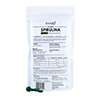 Spirulina w tabletkach (100% naturalna)
Spirulina w tabletkach (100% naturalna)Spirulina posiada w pełni naturalne witaminy i minerały o wysokim stężeniu. W jej skład wchodzą m.in.: biotyna, beta-karoten, kwas foliowy, tiamina, niacyna, witamina D, E i inne witaminy oraz białko i błonnik. To też źródło cynku, magnezu, wapnia, żelaza
Zobacz tutaj ...
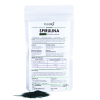 Spirulina w proszku (100% naturalna)
Spirulina w proszku (100% naturalna)Spirulina w proszku to słodkowodna alga, zawierająca duże stężenie witamin, minerałów i innych, ważnych składników odżywczych. Wysoką jakość uzyskano dzięki odpowiednim warunkom klimatycznym, przestrzeganiu restrykcyjnych norm podczas hodowli i …
Zobacz tutaj ...


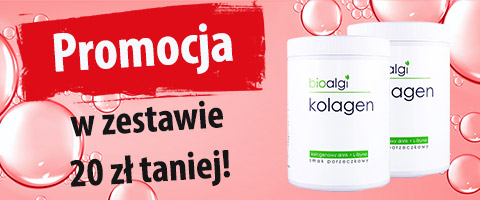



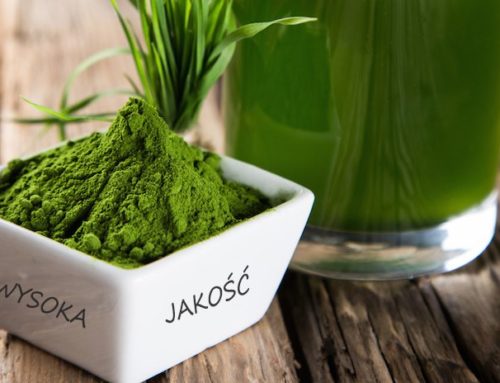


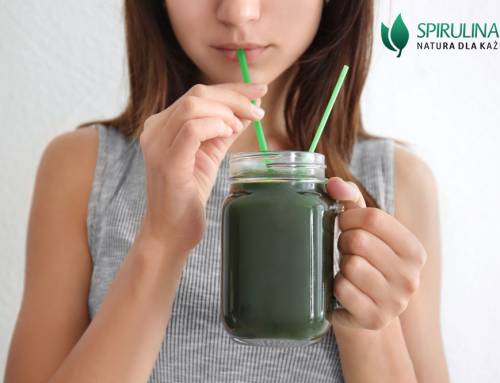
Zostaw komentarz